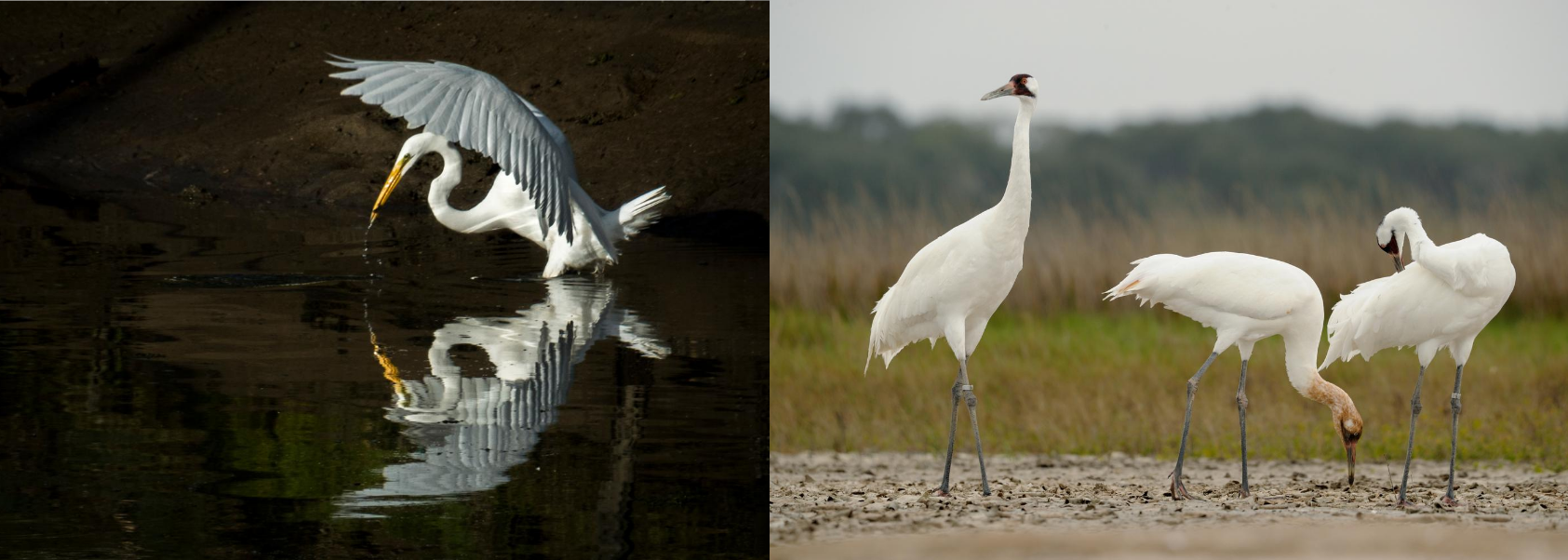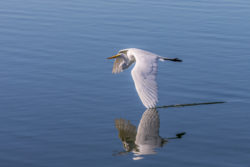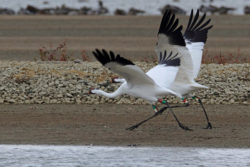
What’s the Difference? Whooping Cranes vs. Great Egrets

Photo Credits: Great Egret – Douglas Croft. Whooping Crane – Klaus Nigge/USFWS.
Whooping cranes and egrets are both white birds that live near rivers, estuaries, and other bodies of water, and it’s easy for the untrained eye to get them confused. Learn what these birds have in common – and what makes them unique – below!
Egrets
These birds are carnivores. They hunt by silently stalking their prey in shallow waters before plunging their bills into the water to capture it. They are also known to steal food from other birds. They aren’t that picky, and will eat fish, invertebrates, amphibians, aquatic insects and other small animals, whatever is easiest to catch and most available.
Their average life span is about 15 years.
They are medium sized birds, reaching up to three feet in height and a wingspan around five feet.
They live throughout the Americas and around much of the world. They are found in many national marine sanctuaries including Monterey Bay, Florida Keys, and Greater Farallones national marine sanctuaries.
They have a curved neck that forms an “s” shape when on land; when they fly, they retract their necks to make their bodies more aerodynamic.
They have a long, yellow, spear-like bill and black legs and feet.
Egrets nest in trees, near water, and gather in groups called colonies.
Whooping Cranes
Whooping cranes are omnivores. They feed by foraging sediments and waters with their bills and eat plants, shellfish, insects, fish, and frogs.
They can live to be between 22 to 24 years.
They are the tallest species of North American bird, reaching up to 5 feet tall and a wingspan of seven and a half feet.
Their necks have a similar shape to egrets but are shorter and cranes hold them straight all the time.
Whooping cranes are bright white birds with accents of red on their heads.
Their legs, bills, and wingtips are black.
They live in family groups and frequent marshes, shallow lakes and lagoons.
Their primary breeding ground is in Canada’s Northwest Territories and Alberta in shallow, grassy wetlands.
Cranes perform elaborate running, leaping, wing-flapping dances to choose mates that they will keep for life.
When summer ends these migratory birds fly South to the Gulf Coast of Texas and winter in the Aransas National Wildlife Refuge.
Both
Both species are long-legged white birds with “s” shaped necks
They are monogamous, breeding with the same partner for life.
Both are migratory species.
Both species are at risk of population decline due to human development, climate change, habitat and prey loss, and other environmental threats.
Both species are incredible to see in their habitats through bird-watching activities.


